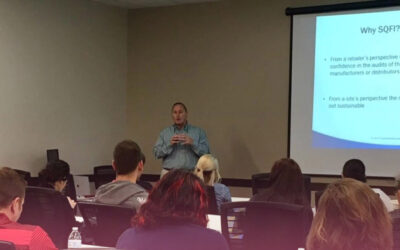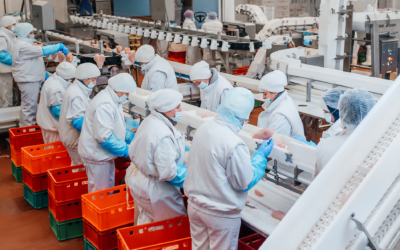By Gary C. Smith, Texas A&M University
Understanding “Ultra-Processed Food”
The term “ultra-processed” was coined by a Brazilian nutrition professor (at University of Sao Paulo) based on the “NOVA System of Food Classification.”1 There’s no hard and fast definition, but, in general, it refers to food with a high proportion of artificial ingredients or added ingredients.2
Processing per se does not make a food or an ingredient less healthy,3,4,5 but the NOVA food classification system implies that there is a direct correlation between the “degree” of processing and the healthfulness of a food.3 Diets high in ultra-processed foods have been associated with obesity, high blood pressure, cancer, and other diseases.2
NOVA Food Classification System
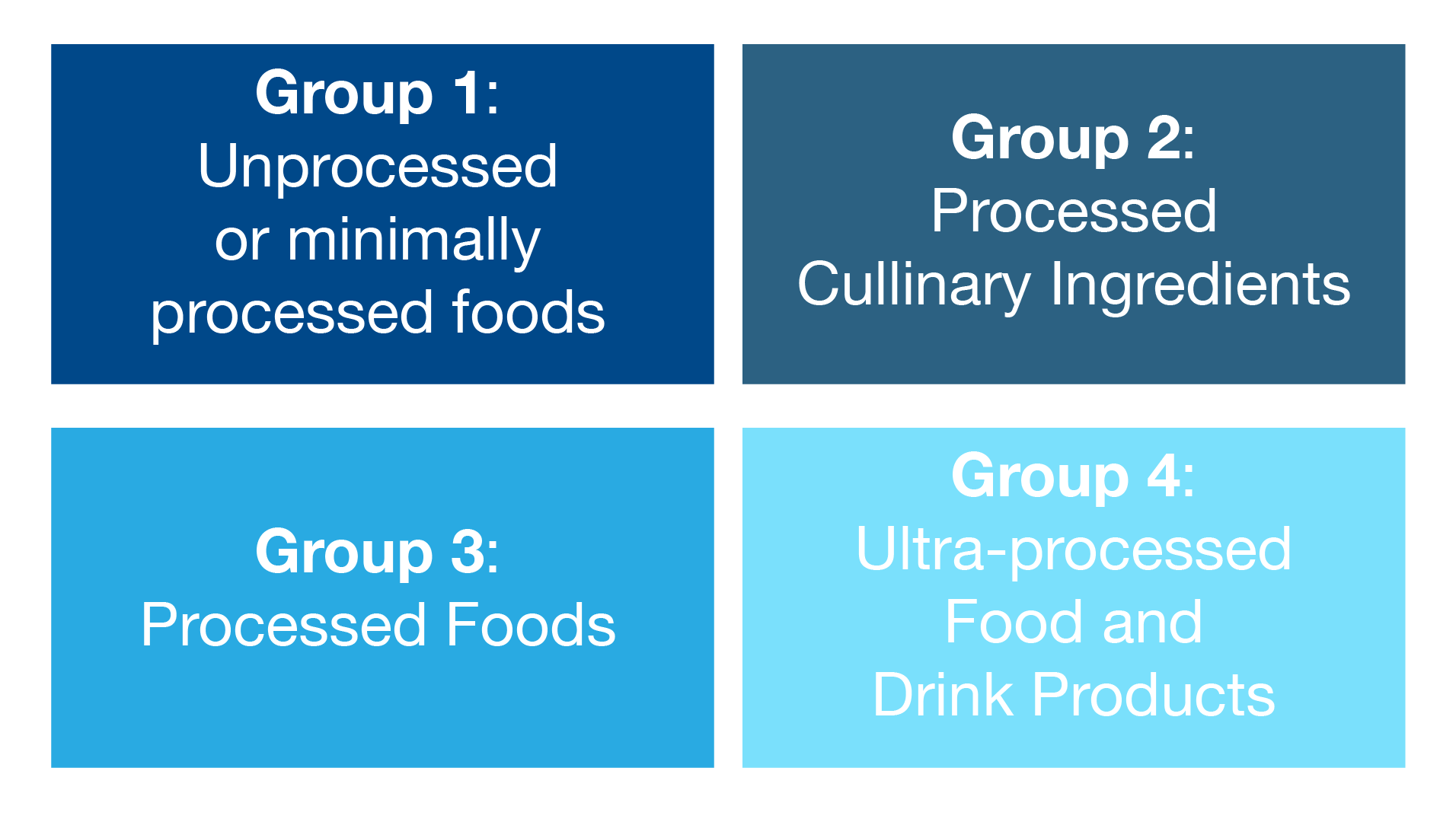
The Allure of “Pseudo-Foods”
“Pseudo-foods” are engineered to be super tasty and alluring as well as high in fat, sugar, and salt.6
They have dominated the U.S. diet for the last 70 years since the food industry discovered that ingredients could be formulated to produce a state of gratification beyond just satisfaction (i.e., the “Bet you can’t eat just one” syndrome).6
This is termed the “bliss point.”6 It is “that stage at which levels of richness, sweetness, and saltiness are perceived as ‘just right’ by the consumer”… add some “crunch” and it’s irresistible.6
There’s a reason pseudo-foods have staying power; it’s because we “crave” them.7 A group of psychologists, neurologists, anthropologists, and consumers from three continents better defined “craveology” (i.e., the basic cravings are for sugar, salt, and fat); cravings are the body’s way of bringing emotional balance – whether from conflicts, deadlines, stress, or even mundane rituals of everyday.7
Food Classification and Health Impact
Since 2009, most health authorities and scientists, in search of a “cause” of obesity and poor health, have categorized foods as:
- Unprocessed food (e.g., raw agricultural commodities).
- Processed food (e.g., food subjected to washing, cleaning, milling, cutting, chopping, or heating).
- Minimally processed food (e.g., a processed food for which most of the inherent physical, chemical, sensory, and nutritional properties are retained).
- Processed culinary ingredients (e.g., vegetable oils, butter, cream, lard, milk proteins, sugar, sweeteners, starches, gums, and preservatives).
- Ultra-processed food (e.g., sugared beverages, juices, milks, no-calorie cola, infant formulas, baby food, cheeses, sauces, breads, breakfast cereals with added sugars, bars, savory and sweet snack products, chips, crisps, and salted, pickled, smoked, or cured meat and fish)5.
What is Ultra-Processed Food?
The NOVA food classification system defines ultra-processed foods as “any product with more than five ingredients.”3
Centers for Disease Control and Prevention identify, among others, these unhealthy ultra-processed foods:
- Ready-to-eat meals
- Heat-and-eat meals
- Pizza
- Cakes
- Cookies
- Doughnuts
- Brownies2
Defining a Healthful Diet: Perspectives from Top Nutrition Scientists and the Debate over Plant-Based Alternatives
A “Common Ground Conference” led by six of the world’s top nutrition scientists who are vegan and/or anti-meat advocates (Walter Willet, David Katz, Dean Ornish, Neal Barnard, Colin Campbell, and Boyd Eaton) defined a “healthful diet” as low in red meat, processed meat, sugar-sweetened drinks, and refined grains.8
Plant-based meat-alternatives classify as ultra-processed food because many of them have 18 or more ingredients (some say they have a “Frankenfood Ingredient List” of unpronounceable chemical-sounding components) and some contain 14.6 times as much sodium as a lean genuine-beef patty.9,10,11,12
Michael Rogers (University of Guelph) worries that the proliferation of Beyond Meat™️ is only adding to a growing food crisis, where — in Canada — 50% of people’s calories come from processed foods.10 Conversely, some argue that a more plant-based diet can help lower the risk of heart disease, colon cancer, and obesity.13
Ultra-Processed Foods in Diet and Disease
Ultra-processed foods make up more than 50% of the total dietary energy consumed in high-income countries such as the U.S., Canada, and the UK.14 In the U.S., we get 70% of our calories from plant-based foods and 30% from animal-based foods; 51% of those calories come from added sugars, fats, and hydrogenated vegetable oils and 30% of those calories come from refined grains.15
Americans have increased their consumption of ultra-processed food from 53% (in 2002)16, to 58% (in 2022).17
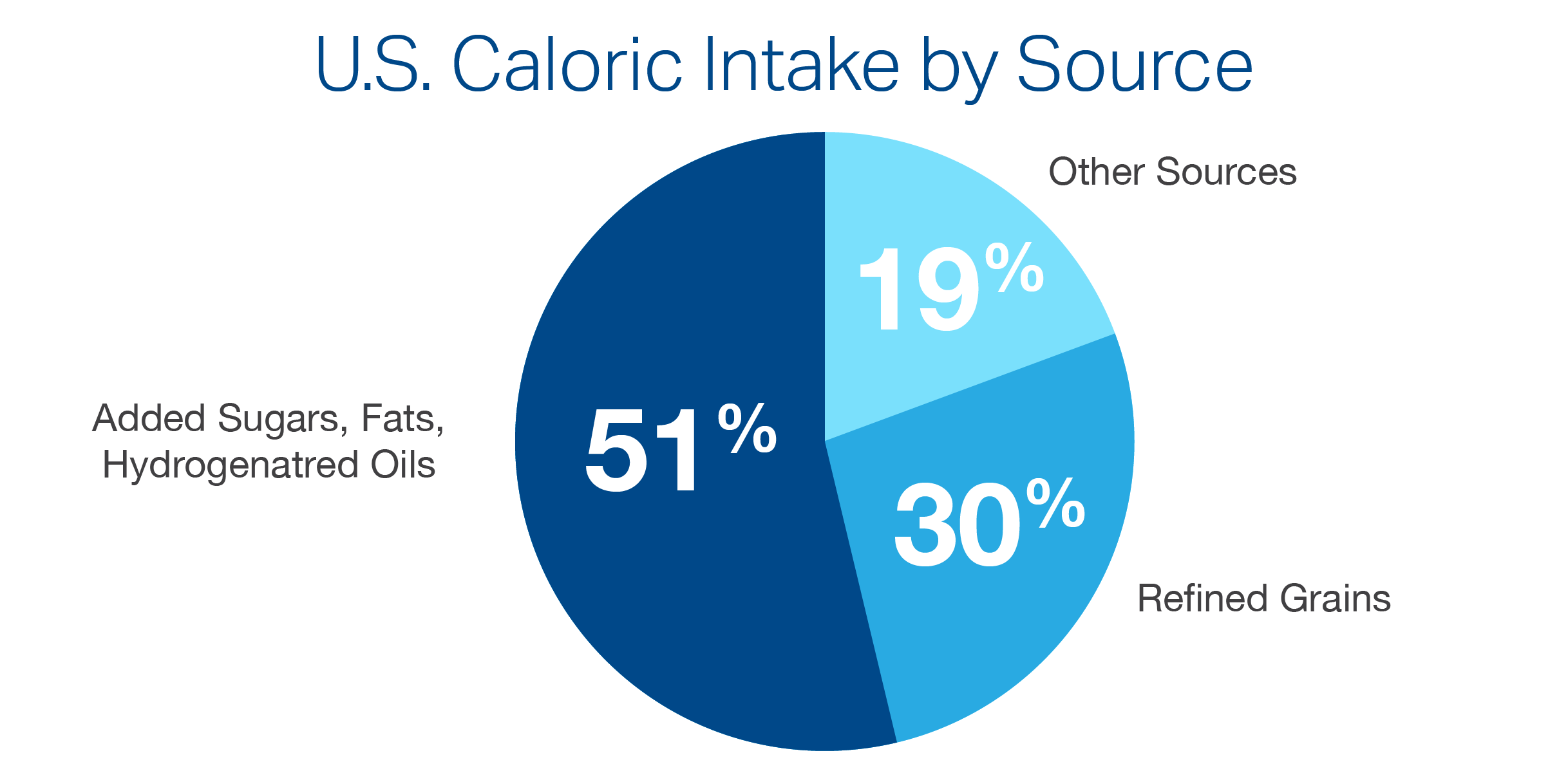
Historical View on Carbohydrates and Heart Disease
For 60 years, there has been ample evidence that high-carbohydrate diets and sugary foods were the most plausible explanations for heart disease.18,19,20,21
Human-nutrition scientists have now honed in on the dietary culprit (i.e., carbohydrates). They believe but have not confirmed the “carbohydrate-insulin model” (i.e., have not proved a cause-and-effect relationship with enough Randomized Controlled Clinical Trials), and need further study of the effect on human health associated with over-consumption of ultra-processed food.22
The Effect of Ultra-Processed Foods on Health
A plethora of epidemiological studies, a few RCCTs, and several scientific opinions have concluded that overconsumption (too much or too frequent) of ultra-processed food:
- Is “unhealthy” (so says the Advisory Committee of Dietary Guidelines For Americans);23
- Contributes to excess calorie consumption and obesity;5
- Hijacks the brain in ways that resemble addictions to cocaine, nicotine, and other drugs that “re-wire” the brain – causing it to elicit behavior that program people to “crave” them;24,25,26,27
- Causes people to eat foods that have concentrated levels of sugars, unhealthy fats, and refined flours without redeeming levels of fiber or nutrients;28,29
- Promotes inflammation throughout the body, which is perhaps the most major threat to healthy aging in the body and brain;29
- Can lead to obesity, high blood pressure, and cancer;29
- Is associated with poor diet quality and higher risk of several chronic diseases, and may be a key driver of the 21st century obesity epidemic;29
- Causes people to gain more weight, and with added weight-gain can come complications such as kidney disease, diabetes, hypertension, high cholesterol, and heart disease;30
- Is linked with increased risk of cardiovascular disease and an increased risk of early death;14
- Raises the risk of obesity, heart and circulation problems, diabetes, cancer, and a shorter life-span.31
Ultra-Processed Foods and Overeating: Insights from NIH Studies
The National Institutes of Health has concluded that ultra-processed foods are playing a big role in Americans’ ever-expanding waistlines; there is something about the highly processed nature of foods that contain high levels of salt, sugar, and fat that drives people to overeat.32
- NIH believes people are able to gulp down ultra-processed food faster, which doesn’t allow sufficient time for the stomach-to-brain signal saying “the tank is full”… so they keep on eating.32
- Other researchers believe that “satiety-messaging” originates from a stretched intestine;33
- Or from bacteria in the gut microbiome;29,34,35,36
- Or the appetite hormones (ghrelin and leptin);37
- Or the “endocannabinoid homeostasis system”, (which regulates our hedonistic “cravings” for fatty, starchy, and sugary food);37
- Or sensory neurons in fat deposits near the spine,38 none of which could, during a single eating episode, trigger the brain to tell us that we have taken in enough and can stop eating by switching-off hunger-promoting neurons in the hypothalamus.
Ultra-Processed Food Consumption and Its Consequences
In the U.S., 61% of adults’ total diet comes from ultra-processed foods; numerous studies show that industry-engineered foods can lead to obesity, high blood pressure, and cancer.39
One scientist recommends reviewing the “Ingredients” statement on the label and buying only those products with the least number of ingredients and with ingredients you understand; limiting consumption of ultra-processed foods may be an effective strategy for obesity prevention and treatment.39
Scientific Studies on Ultra-Processed Foods and Mortality
Two large epidemiological studies published in the same edition of the British Medical Journal caused a journalist to conclude that, “Ultra-processed foods are easy, cheap, and could be killing you.”14
In Spain, a study of almost 20,000 people for 16 years measured how frequently they ate food of each of the four NOVA food categories and found that higher consumption (more than four servings per day) of ultra-processed food was associated with a 62% increased risk for earlier death.40 And, each additional serving of factory-made fare increased the Relative Risk of mortality by 18%.40
In France, using data from 105,000 people and NOVA food categorization found that:
- Each 10% increment in the percentage of ultra-processed foods people ate was associated with a 12%, 13%, and 11% increase in the rates of overall cardiovascular, coronary heart, and cerebrovascular disease, respectively.
- There is an association between consumption of minimally processed foods and lower risks of these same diseases.
- To improve their health, people need to limit their consumption of ultra-processed foods, while increasing the amount of unprocessed or minimally processed foods (e.g., milk, meat, eggs, poultry, fish, seafood, fruits, vegetables, legumes, yogurt, whole grains, natural juices) in their diets.41
Evidence from NIH Controlled Clinical Trials
The best of the evidence is that of a Randomized Controlled Clinical Trial conducted by the National Institutes of Health (NIH) which concluded that:
- We consume too many calories when we eat ultra-processed foods because we can consume them so rapidly that our “satiety feedback message” is too slow in informing us that “we should feel full”.
- Individuals on the ultra-processed diet ate 508 calories more per day (by taking extra helpings) and gained an average of one pound per week; those on the minimally processed diet lost an average of one pound per week.
- People on the ultra-processed food diet ate faster, ate more, and gained weight.32,42
Another NIH-funded study showed that cutting 20% of the sugar in packaged foods and 40% from sweetened beverages could prevent 2.48 million cardiovascular disease events such as strokes, heart attacks, and cardiac events; 490,000 cardiovascular deaths; and 750,000 diabetes cases in the U.S. over the lifetime of the current adult population.43
Ultra-Processed Food Can Lead to Cognitive Decline
A recent study of more than 10,000 men and women revealed that those people who ate the most ultra-processed foods had a 25% faster rate of decline in “executive function” (i.e., ability to process information and make decisions) and a 28% faster rate of overall cognitive impairment compared with those who ate the least amount of overly processed food.44
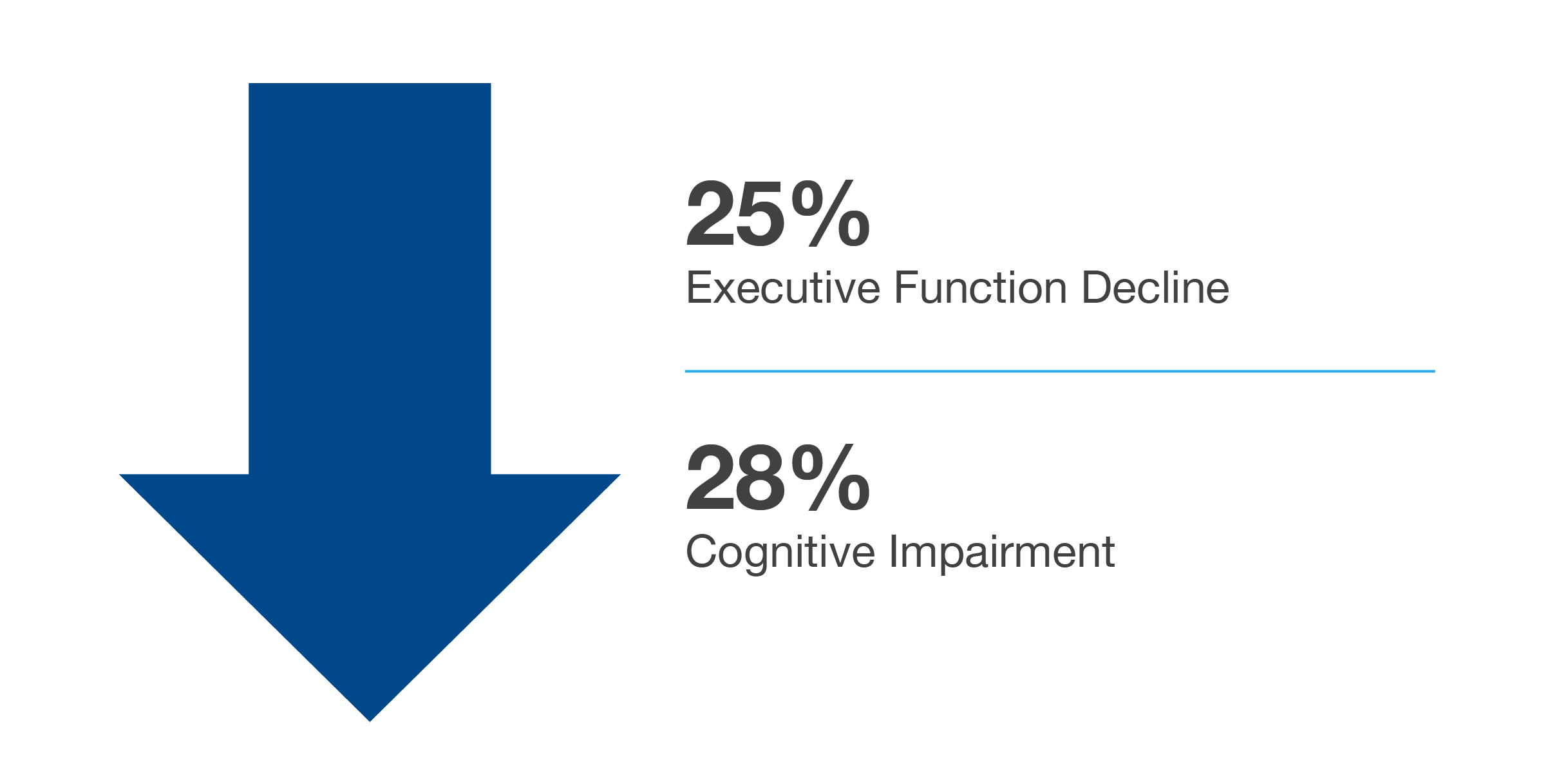
That study,44 combined with the work of Rudy Tangi,29 supports the notion that if your daily calorie intake from eating ultra-processed food is too high (e.g., exceeds 20% of total intake44) you may affect the balance of bacteria in your gut microbiome29 – and thereby increase the risk of age-related brain diseases like cognitive decline, dementia, and Alzheimer’s Disease.29,44
A small order of French fries and a regular cheeseburger (both of which are ultra-processed foods) contains a total of 530 calories; that’s 26.5% of a 2000 calories-a-day diet.31
Processed Food Industry’s Role in Dietary Trends
In 1999, the leaders of the largest processed food companies met privately to discuss the consumption of “craveable” foods and the upturn in rates of obesity; they’ve known for decades that sugary and salty foods are not good for us, yet none has acted to change the content of its “big sellers.”6
The science hasn’t changed the thinking among food and beverage companies which are, after all, primarily in the business of selling the Doritos™️ and Twinkies™️ that people crave.45
Some food companies have corrupted nutrition recommendations toward their profit-driven ends.23 People’s health must be prioritized over corporate profits.46 Far too many foods marketers have exacerbated the problem by capitalizing on the frailty of the human predilection toward hedonism in designing “craveable” rather than “beneficial” products.5
Controversies in Dietary Guidelines and Expert Opinions
Too many experts at some of our most trusted institutions have been complicit in giving disingenuous nutrition advice regarding carbohydrates, plant-based diets, and ultra-processed foods.47 Too many “experts” over-interpret weak and impressionistic data shaped by passions verging on zealotry.48
Unfortunately, the 2020-2025 Advisory Committee of Dietary Guidelines For Americans (AC-DGFA) was over-populated with biased and conflicted “experts”; nearly all 20 members had long lists of “conflicts of interest” with food, pharmaceutical, or supplement companies, 11 members trained in epidemiology (decidedly weak science for identifying casual relationships), and the majority favored vegetarianism or predominately plant-based, rather than balanced, diets.49
As a result, the 2020-2025 DGFA has veracity problems, suffering from:
- Entrenched bias of AC-DGFA members and their “Deep State” USDA and USDHHS “helpers”.
- Complacency among those in Washington D.C. bureaucracy who don’t want to change anything canonized in previous versions of the DGFA.
- Pressure and influence from lobbyists representing “Big Food”, commodity groups, activists, and special-interest groups.47,50,51,52,53,54
Nutrition Advice and Industry Influence
Marion Nestle Ph.D. (an eminent human nutritionalist) said, “Ultra-processed is the new way of talking about foods that should not be consumed regularly or in large amounts – tons of evidence has come in within the last five years, yet the DGFA Advisory Committee didn’t even discuss it as they finalized the 2020-2025 Dietary Guidelines For Americans.”55
Steve Dittmer (a journalist) phrased it differently saying, “No reference to carbohydrates or plant-based diets or ultra-processed food was made.”47
R. Clemens and P. Pressman (human nutrition scientists) said, “The DGFA Advisory Committee has leaned heavily upon epidemiological studies, which suggest (but do not demonstrate a causal effect) that ultra-processed foods are “unhealthy.”5
All three statements could be correct. The AC-DGFA probably discussed these matters but could have been coerced (by the Deep State, the bureaucracy, or lobbyists) not to recommend anything. Or, they could have decided that there is insufficient evidence (especially a lack of RCCTs to warrant making a general Recommendation. Or, they may have had “second thoughts” and didn’t want to exacerbate the problems they have already parented.
Nina Teicholz bravely proclaimed, “If, in recommending that Americans avoid meat, cheese, milk, cream, butter, eggs, and the rest, it turns out that nutrition experts made a mistake, it will have been a monumental one. Measured just by death and disease, and not including the millions of lives derailed by excess weight and obesity, it’s very possible that the course of nutrition advice over the past 60 years has taken an unparalleled toll on human history.”48
And, Gary Taubes says, “Getting the wrong answer on such a huge and tragic scale borders on the inexcusable; can we get the low-fat proponents to apologize?”56
REFERENCES
- 1 Klapholz, Sue. 2022. Food Technology. January Edition.
- 2 Demetrakakes, Pan. 2021. Food Processing. August 10 Issue.
- 3 Keefe, Lisa. 2022. Alt•Meat. February Edition
- 4 Gehring, Kerri. 2018. Texas A&M University. January 18 Issue.
- 5 Clemens, P. and P. Pressman. 2019. Food Quality & Safety. May Edition.
- 6 Norris, Chuck. 2019. The Eagle. June 3 Issue.
- 7 Turner, Jeanne. 2020. Food Processing. January Edition.
- 8 Templeton, David. 2016. Pittsburgh Post-Gazette. January 11 Issue.
- 9 Coggin, Will. 2019. USA Today. November 3 Issue.
- 10 Bharti, Bianca. 2019. National Post. August 7 Issue.
- 11 Berry, Donna. 2020. Meat + Poultry. July 22 Issue.
- 12 Cesario, A. and J. Vahalik. 2022. Alt•Meat. April Edition.
- 13 Meyer, A. and L. Finlay. 2022. Reader’s Digest. October Edition.
- 14 Scutti, Susan. 2019. CNN. May 30 Issue.
- 15 Layman, Don. 2020. CALF News. July Edition.
- 16 Juul et al. 2021. American Journal of Clinical Nutrition. October Edition.
- 17 LaMotte, Sandee. CNN. December 5 Issue.
- 18 Ahrens et al. 1961. Transactions of the Association of American Physicians 74:134-146.
- 19 Yudkin, John. 1972. Pure, White, And Deadly. Penguin. New York, NY.
- 20 Leslie, Ian. 2016. The Guardian. April 7 Issue.
- 21 Albrick, Margaret. 1962. Archives of International Medicine. 109:345-359
- 22 Smith, Gary. 2023. FSNS Newsletter. April Edition.
- 23 Teicholz, Nina. 2019. Nutrition Coalition. January 17 Issue.
- 24 Volkow, Nora. 2011. National Institute on Drug Abuse. November Edition.
- 25 Langreth, Robert. 2011. Bloomberg News. November 6 Issue.
- 26Scripps Research Institute. 2011. Nature Neuroscience. November 5 Issue.
- 27 Ludwig, David. 2011. Harvard University. November 5 Issue.
- 28 Stanford, Duane. 2011. Denver Post. November 5 Issue.
- 29 Tanzi, Rudy. 2022. CNN. December 5 Issue.
- 30 Langer, Abby. 2019. National Institutes of Health. August 7 Issue.
- 31 Katz, David. 2022. CNN. December 5 Issue.
- 32 Hall, Kevin. 2019. National Institutes of Health. May 17. Issue.
- 33 University of California-San Francisco. 2019. Genetic Engineering News. November 15 Issue.
- 34 Zarrinpar, Amir. 2022. Inside Precision Medicine. August 4 Issue.
- 35 Wang, Meng. 2022. Inside Precision Medicine. August 6 Issue.
- 36 Thaiss et al. 2022. Nature. December Edition.
- 37 Dasgupta, Raj. 2019. CNN. October 25 Issue.
- 38 Patapoutian, Ardem. 2022. Genetic Engineering News. September 1 Issue.
- 39 Fitzgerald, Nurgul. 2019. Rutgers University. May 17 Issue.
- 40 Bes-Rastrollo, Maira. 2019. British Medical Journal. May 29 Issue.
- 41 NutriNet-Sante Project. 2019. British Medical Journal. May 29 Issue.
- 42 Boudreau, Catherine. 2019. Morning Agriculture. May 17 Issue.
- 43 Shangguan et al. 2021. Circulation. September Edition.
- 44 Suemoto et al. 2022. JAMA Neurology. November Edition.
- 45 Hoyle, Tim. 2011. Bloomberg News. November 6 Issue.
- 46 Demetrakakes, Pan. 2021. Food Processing. September 21 Issue.
- 47 Dittmer, Steve. 2020. AFF Sentinel. August 12 Issue.
- 48 Teicholz, Nina. 2014. The Big Fat Surprise. Simon & Schuster, New York, NY.
- 49 Teicholz, Nina. 2019. Nutrition Coalition. April 14 Issue.
- 50 Teicholz, Nina. 2020. Meatingplace. October 22 Issue.
- 51 National Academies of Science, Engineering, and Medicine. 2017. Food Processing. October Edition.
- 52 Teicholz, Nina. 2015. British Medical Journal. September 23 Issue.
- 53 Fusaro, Dave. 2017. Food Processing. October Edition.
- 54 Fusaro, Dave. 2020. Food Processing. August Edition.
- 55 Nestle, Marion. 2020. CNN. July 15 Issue.
- 56 Taubes, Gary. 2002. New York Times Magazine. July 7 Issue.


